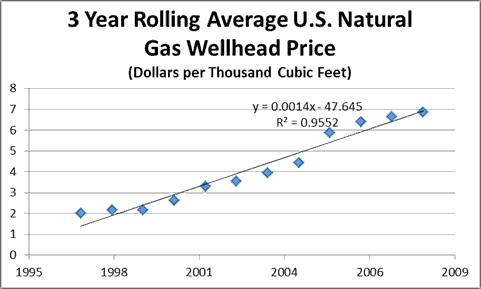Environmental Goals: Is it to Save Lives?
As I discussed in my previous blog on the issue with the EPA analysis on MATS / MACT , EPA’s intent is good, but is it worth it given all the other issues. The logic not only applies to EPA regulations but everything we want to do as a society. I always made this argument with my friends and colleagues who are so passionate about global warming. The resources and capital must be spent from somewhere.
The other important point to discuss is the objective. What are the objectives? Many of these passionate arguments conclude the objective is to save lives. I always espoused if saving lives is your objective there are numerous issues with finite cost that can save lives now (e.g. clean water technology, vaccines, education, etc…). I now have a perfect frame of reference to support my thesis. Bill Gates philanthropic adventures show he has saved lives at cost of less than $5K per person. Remember EPA analysis required $3-7 million dollars per life. Think about some of the cost figures to mitigate carbon. On a per life basis these numbers get very high and the returns are not likely seen till many years later.
A rationale argument, perhaps not too morally preferred, would be those lives are not likely related to you. The low cost lifesaving methods are largely focused in the developing world region. However at the same time the rationale used to promote many of the global climate concerns are from studies documenting the greatest harms will be in third world areas.
I don’t have the answers, but I do know we have avoided talking about the objectives and the cost and the alternative use of capital and resources. Unfortunately, I agree that an optimal decision in energy and/or environment will likely result in subpar results as the money will likely be spent frivolously in other areas. However at some point, we can’t all spend money frivolously/non-optimal. We are seeing the result of this across the world as debt spending was an easy way to support frivolous/non-optimal spending.
I have developed many thought provoking concepts in various policy discussion. Please do keep All Energy Consulting in mind for your consulting needs. Let us write you a proposal.
Your Energy Consultant,
Cross State Air Pollution Rule (CSAPR) Halted – Moral Hazard
Though I may not always agree in the merit of the various environmental regulations, I do believe the courts halt of CSAPR rule was out of line. The rationale of the court and the plaintiff was the regulation was going to wreak havoc on the economy and the reliability of the system. I contend the stay may result in greater havoc for our economy. The utilities arguing for this under the merit of timing are somewhat disingenuous.
The EPA attorneys should note CSAPR is a modified Clean Air Interstate Rule (CAIR). CAIR was issued on March 10, 2005. CAIR was then vacated/remanded in late 2008. The irony is the vacature came from the environmentalist. The environmentalist did not like the fact trading could result in creating hot spots of emissions and could result in no change in downwind states emissions. EPA had to go back and modified the rule so there would be limits on trading, so downwind states will actually see reductions regardless of trading. Utilities expecting CAIR to disappear when it was vacated would have been very foolish. In fact, that is not what occurred. Over the last few years, we saw significant changes to the coal fleet with significant control equipment installation. As noted in AEP sustainability report – “Since 2004, AEP invested more than $5 billion to install state-of-the-art environmental controls that have resulted in significant reductions in regulated emissions from our power plants” I can tell you AEP did not do this for the press release or the sustainability report, but for preparing for CAIR and MACT /MATS along with NSR settlement. The excuse of not having enough time cannot be legitimately used given when CAIR was issued and the fact CSAPR allows significant trading for the first two years. Given a well-designed trading strategy even those ill-prepared plants such as Monticello can continue to run.
There are many assets that have threatened to retire. I would like to call the bluff on many of those. In fact many coal plants, I suspect the owners have financial concerns versus implementation concerns. The best bet for those owners would be to place those assets for sale and / or develop a very aggressive emissions trading program versus retiring, but the threat of retiring allows them to sustain the status quo.
In terms of reliability concern, I would have really liked the courts to have waited for real proof. If they observed brown outs in January or in any other time period, I would have no issue for the court to stay the decision. This premature stay is not conducive for the economy. The court has created a moral hazard. They are making our economy to be reactive not proactive. Those who moved forward and thought ahead and planned are now being punished. Those who waited and did nothing are being rewarded. I understand policies and regulation will likely never be perfect, but if we cannot implement and learn we will never progress.
I have evaluated every environmental program to hit the power sector over the last 10 years. Please do keep All Energy Consulting in mind for your consulting needs. Let us write you a proposal.
Your Energy Consultant,
Shale Gas Revolution adds $193 Billion to the US Economy
The naysayers and those who want shale gas to go away have not seriously looked at the benefits of lower natural gas prices to the US economy. In this blog, I decided to evaluate the savings the shale gas revolution has given to the US economy. As I have been espousing, energy is just a means to an end. Reducing energy cost, immediately increases value to society. The inverse is also true.
In order to calculate the value of the shale gas revolution, I looked at the natural gas price trend on a three year rolling average from the EIA. I started in 1997 and stopped the graph in 2008 right before the shale revolution presented itself. Interesting to see the three year rolling average price is quite linear with an R^2=0.9552.
Obviously extracting the equation for future years is a plausible method to calculate the price of natural gas without shale gas. However, there are concerns with that method in that eventually prices do hit a plateau as alternative uses and demand response do occur. A cautious and conservative calculation is to assume the price of $7/mmbtu.
With this price, we can cross multiply the consumption and compare the cost to the US economy with or without shale gas. I know one of the first comments would be higher gas prices would have lowered consumption. I will agree with that in principle. However, did you know from 2002 to 2008 gas demand rose in the midst of the largest sustained gas price rise of over 270%? This growth came from the fact the incremental demand of power had to be met. Since the US did not build any significant baseload generation outside gas units over the past 10 years it was left to gas units to fill the gap. The price of electricity is small when compared to the value it can bring therefore a 270% rise in gas price was not going to stop gas demand. In reviewing my math in the table below, I took a conservative view and held demand at 2009 levels in the case of without shale gas.
| With Shale | Without Shale | ||||||
| Wellhead Price | US Demand | Cost of Gas | Wellhead Price | US Demand | Cost of Gas | US Savings | |
| $/MCF | MMCF | $Billion | $/MCF | MMCF | $Billion | $ Billion | |
| 2009 | 3.67 | 22910078 | $ 84.08 | 7 | 22910078 | $ 160.371 | $76.291 |
| 2010 | 4.48 | 23775388 | $ 106.514 | 7 | 22910078 | $ 160.371 | $53.857 |
| 2011 | 4 | 24466323 | $ 97.865 | 7 | 22910078 | $ 160.371 | $62.505 |
| Total | $192.653 |
With the shale gas revolution, the US saw a stimulus to the tune of $193 billion over the last three years. The $193 billion savings to the US economy is conservative in the fact without shale gas more money would have been expatriated via LNG if it were not for shale gas. To put this number in perspective I reviewed the Recovery Act spending. In the grand scheme $193 billion compared to the total Recover Act of $840 represents 23%. On several individual parts of the Recovery Act, shale gas savings dwarfed many categories (e.g. Unemployment benefits $61 Billion, Infrastructure $24.5 Billion, Energy Incentives $10.8 Billion, Housing $5.5 Billion).
The industry needs to learn how to extract and educate the public on the value it has produced for society. Innovation and hard work produces more return and more transparent stimulus to society than any government program could ever create.
I do agree and support the regulation of the industry to limit the amount of bad actors that are willing to cut corners and sacrifice the environment for small increments. Our recent significant problems (Accounting Scandals to Housing/Banking to Oil Spills) can be blamed on the actors directly involved, but there is much blame to be placed on the appointed regulators for each of those industries. Regulatory capture has been and continues to be a constant theme in these economic woes. More rules do not solve the problem; we need better regulators to enforce existing laws and apply common sense.
The administration should thank and embrace those who created and produced this shale gas revolution, as the economy could be $193 billion worse and rising each year.
I have been prescient in forecasting economic calamity and the impact on the major commodity markets (Forecasted both the 1998 Asian Financial crisis and the recent financial crisis and the drop in the major commodity markets in each case).
We positively and evocatively challenge the current thinking involving any aspect of energy use. We look for projects that offer meaningful, transformative, with impactful outcome to the marketplace or society (see projects).
Please consider All Energy Consulting for your consulting needs.
Your Energy Consultant,





